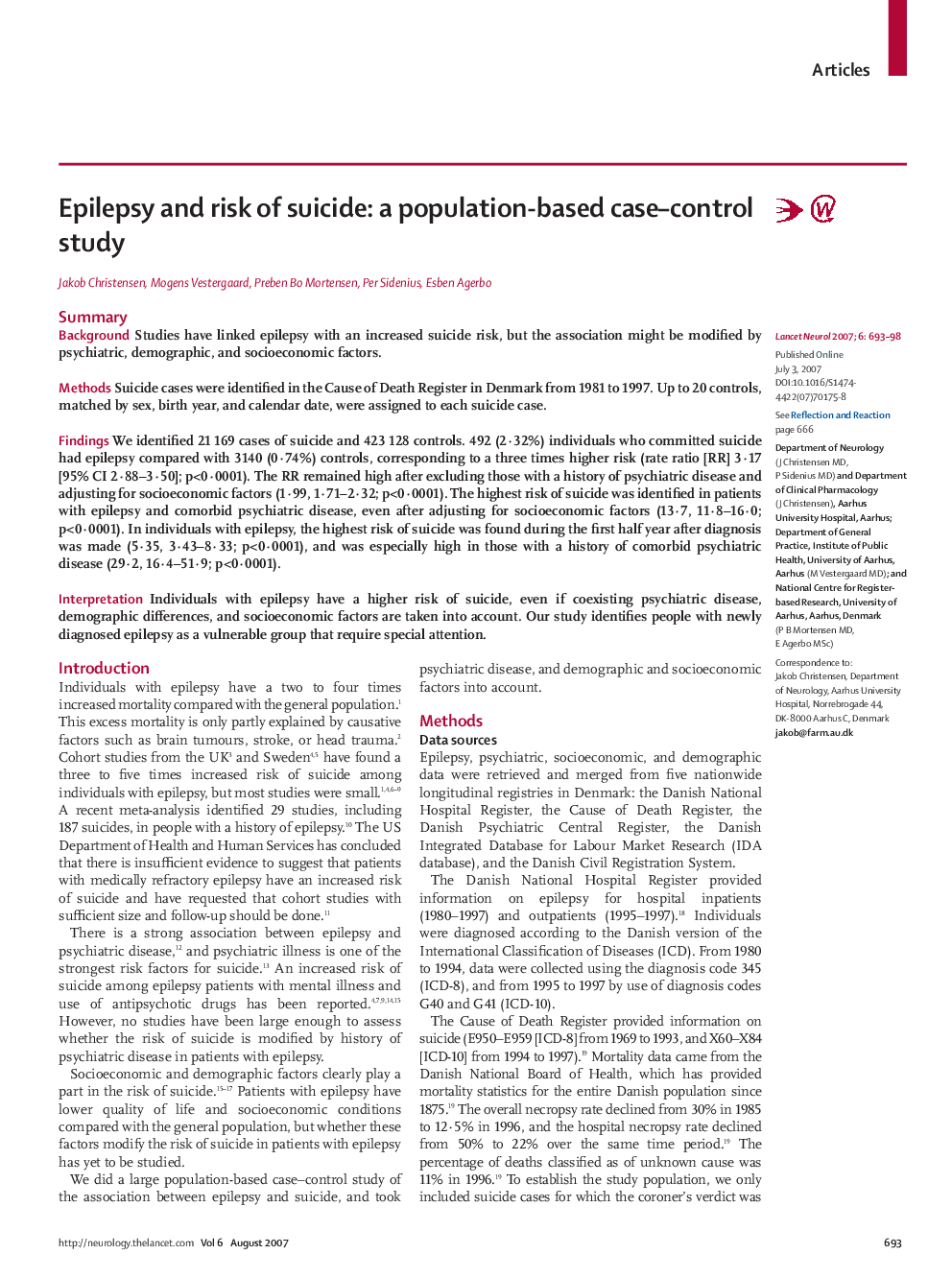| Article ID | Journal | Published Year | Pages | File Type |
|---|---|---|---|---|
| 3067816 | The Lancet Neurology | 2007 | 6 Pages |
SummaryBackgroundStudies have linked epilepsy with an increased suicide risk, but the association might be modified by psychiatric, demographic, and socioeconomic factors.MethodsSuicide cases were identified in the Cause of Death Register in Denmark from 1981 to 1997. Up to 20 controls, matched by sex, birth year, and calendar date, were assigned to each suicide case.FindingsWe identified 21 169 cases of suicide and 423 128 controls. 492 (2·32%) individuals who committed suicide had epilepsy compared with 3140 (0·74%) controls, corresponding to a three times higher risk (rate ratio [RR] 3·17 [95% CI 2·88–3·50]; p<0·0001). The RR remained high after excluding those with a history of psychiatric disease and adjusting for socioeconomic factors (1·99, 1·71–2·32; p<0·0001). The highest risk of suicide was identified in patients with epilepsy and comorbid psychiatric disease, even after adjusting for socioeconomic factors (13·7, 11·8–16·0; p<0·0001). In individuals with epilepsy, the highest risk of suicide was found during the first half year after diagnosis was made (5·35, 3·43–8·33; p<0·0001), and was especially high in those with a history of comorbid psychiatric disease (29·2, 16·4–51·9; p<0·0001).InterpretationIndividuals with epilepsy have a higher risk of suicide, even if coexisting psychiatric disease, demographic differences, and socioeconomic factors are taken into account. Our study identifies people with newly diagnosed epilepsy as a vulnerable group that require special attention.
